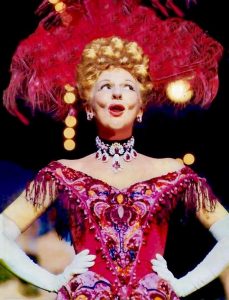Bernie Lowe (November 22, 1917 - September 1, 1993) was an American songwriter, record producer, arranger, pianist and bandleader.
Born Bernard Lowenthal, Mr. Lowe graduated from Central High School and studied piano at The Juilliard School in New York. When he was 13, he was playing the piano in clubs, hotels and cafes around the city.After high school, he played for Meyer Davis and for orchestras led by Howard and Lester Lanin. He performed in night clubs around the country.
He was arranging and conducting the orchestra on "The Paul Whiteman TV Teen Club" in the early fifties when he met Dick Clark, the announcer for the show's live Tootsie Roll commercials. The two became friends and, later, business associates.
 |
| Lowe & Mann |
When "Butterfly" went to number one in April 1957, Bernie Lowe was convinced that rock 'n' roll - or at least an approximation of it - was the way to go. Still, Lowe and Mann were the products of an earlier, much different generation and never fully concealed their contempt for rock 'n' roll. It was just that Lowe's "love of money exceeded his dislike of rock 'n' roll", as Bill Millar has put it. In a way, "Butterfly" foretold the shape of things to come : R&R records whose sound was determined more by a producer's formula than by a singer's uninhibited spirit. It was no coincidence that this development started in Philadelphia, a city associated more than any other with the corruption of rock 'n' roll.
 Lowe and Mann wrote more songs for Charlie Gracie (Just Lookin', Fabulous, Wanderin' Eyes) and Lowe also plays piano on all of Gracie's Cameo recordings. But by mid-1958, Gracie was gone. "I was expendable", Gracie said. "I was the first one to get screwed by Cameo. I sued for my royalties, settled for $40,000 and left". Lowe and Mann launched Cameo's sister label, Parkway, in 1959. By this time, most of the A&R work was done by Dave Appell, who also led an instrumental group, The Applejacks.
Lowe and Mann wrote more songs for Charlie Gracie (Just Lookin', Fabulous, Wanderin' Eyes) and Lowe also plays piano on all of Gracie's Cameo recordings. But by mid-1958, Gracie was gone. "I was expendable", Gracie said. "I was the first one to get screwed by Cameo. I sued for my royalties, settled for $40,000 and left". Lowe and Mann launched Cameo's sister label, Parkway, in 1959. By this time, most of the A&R work was done by Dave Appell, who also led an instrumental group, The Applejacks.  |
| Lowe & Rydell |
 |
| Dave Appell |
 For a time, Lowe continued to work in the recording industry, doing some freelance music work and scouting for new performing groups. But he developed Parkinson's disease after he retired and was soon unable to work.
For a time, Lowe continued to work in the recording industry, doing some freelance music work and scouting for new performing groups. But he developed Parkinson's disease after he retired and was soon unable to work.In April 1993, Lowe was inducted into the Philadelphia Walk of Fame, and his star was placed in the sidewalk in front of 309 S. Broad St., the building that was once the headquarters for Cameo-Parkway. He died in Wyncote, Pennsylvania, a suburb of Philadelphia, on September 1, 1993 (age 75).
(Info edited from Black Cat Rockabilly, Andy Wallace @ The Inquirer and Wikipedia. Quotes are from: The Twist : the story of the song and dance that changed the world by Jim Dawson).

















































































































































